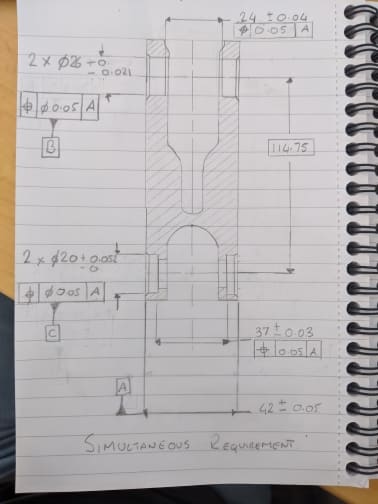Rwelch9,
You aren't going to find a figure or sentence in the standard that covers every possible case - most have to be extrapolated (and in some cases - extended within reason).
It might help to better understand the mechanism behind Simultaneous Requirements. Per Y14.5-2018 para 7.19:
ASME Y14.5-2018 para 7.19 said:
A simultaneous requirement applies to position and profile tolerances that are located by basic dimensions related to common datum features referenced in the same order of precedence at the same boundary conditions. In a simultaneous requirement, there is no translation or rotation between the datum reference frames of the included geometric tolerances, thus creating a single pattern.
Features held in Simultaneous Requirements have DRFs which are constrained in location/orientation relative to each other even if the DRFs themselves are not fully constrained in all 6 DOF. As the standard suggests, the effect is as if all the features were specified as part of a
single pattern and this is probably the best way to think of it. This is shown in the difference between figs 7-47 and 7-48. In 7-47 even though the rotational DOF around A is not constrained, the tolerance zones for the slots are fixed in rotation relative to each other - the effect is the same as if the slots had been specified as part of a "2X" pattern. In 7-48 SEP REQT is utilized to allow the tolerance zones to rotate relative to each other about A, and they no longer behave as a pattern.
In the case of your part you have 4X tolerance zones which are fixed in basic location/orientation relative to each other (and to datum feature A), as if they were a single pattern. Assuming x is up/down, y is perpendicular to the page, and z is left/right that means that even though A only constrains (u,v,z) and the tolerance zones are free to translate (x,y) and rotate (w) -
they must do so together as if they were a single pattern.

